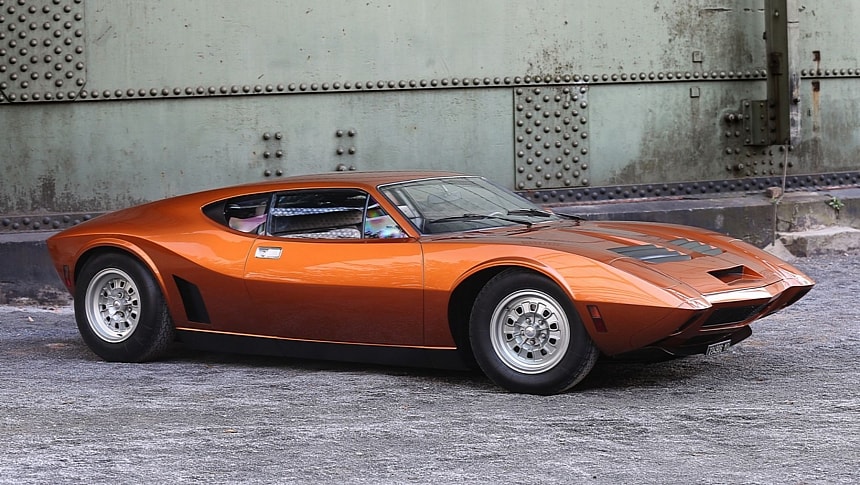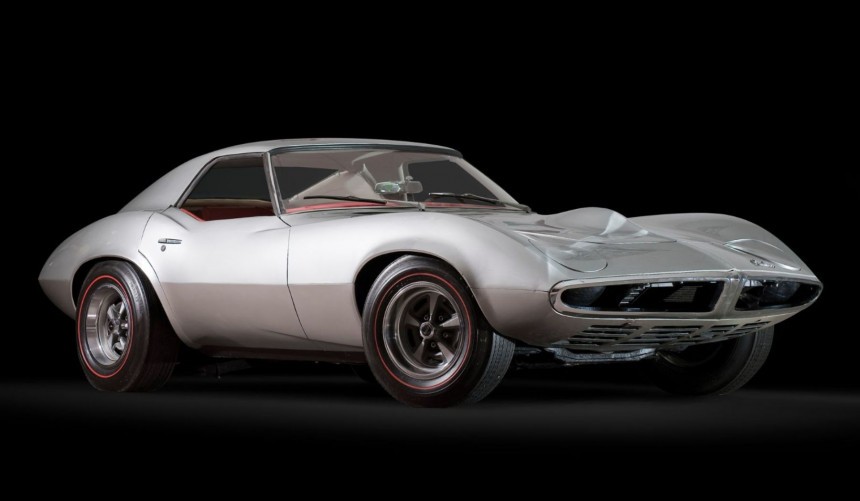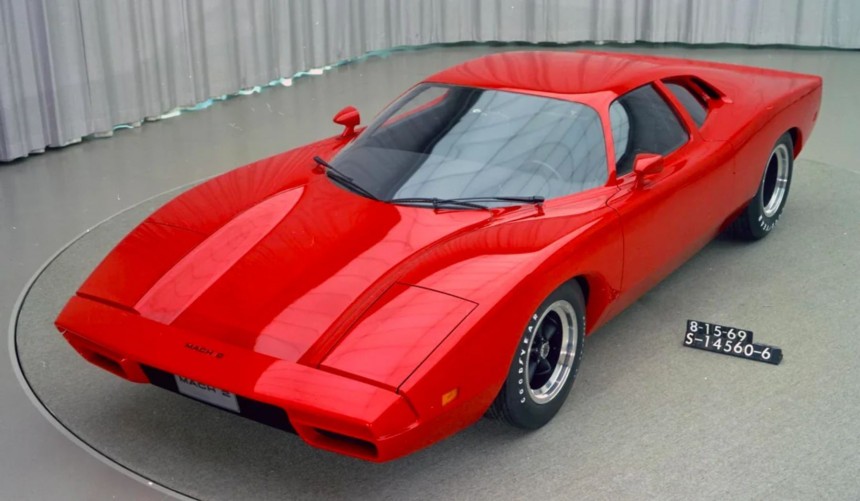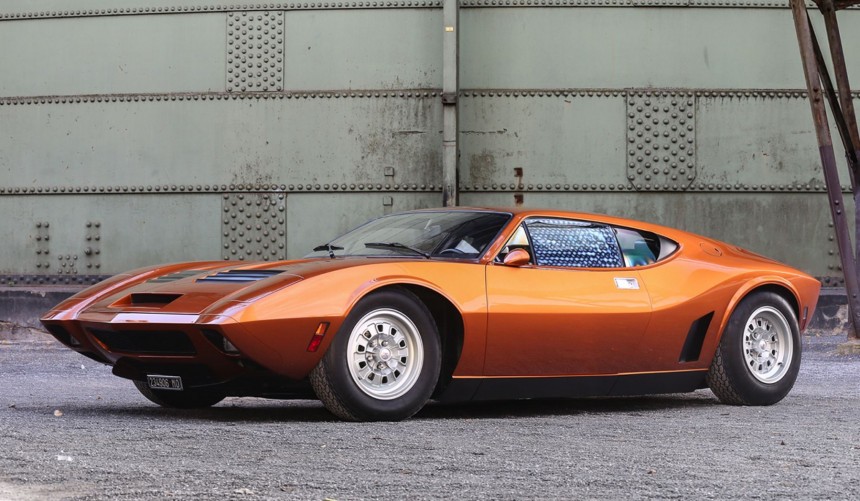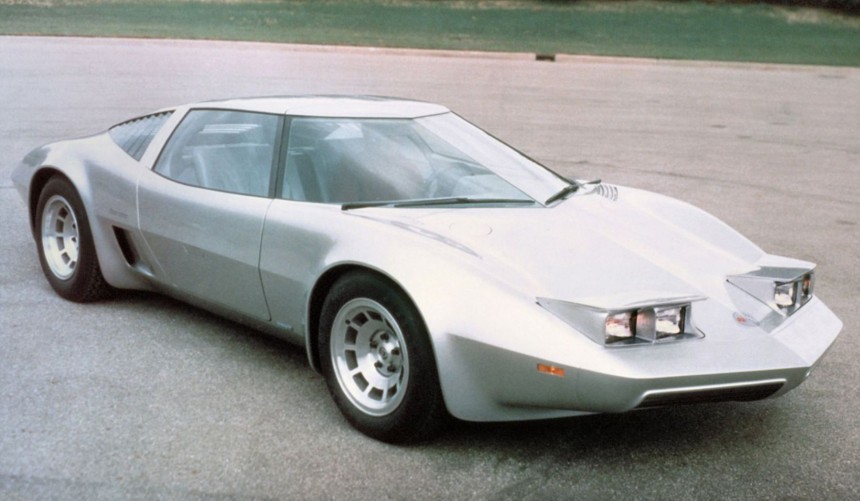While some show cars were too futuristic to become production models, these five production-ready concepts could've become icons if not for a controversial management decision.
Widespread today, concepts or show cars developed to showcase a manufacturer's vision for the future started becoming a thing after the Second World War.
That being said, the first thoroughbred show car came nearly a decade earlier in the shape of the Harley J. Earl-designed Buick Y-Job.
During the 1950s, American carmakers made a habbit of building show cars that were either meant to draw attention to a new design language, or shocase a future production car.
From there, and all the way into the 1970s, Detroit's Big Three were responsible for some of the most breathtaking concepts ever created.
Of those, several were impressive sports cars that were awfully close to making it as production models, and in this article, we'll remember five that we still wish would have been unleashed on public roads.
In 1953, Chevrolet showcased the Corvette at the GM Motorama. The model, which went into production later that year, became America's favorite sports car and an automotive legend.
A year later, the Motorama was host to another series of exciting concepts, including the elegant Oldsmobile F-88.
Based on the underpinnings of the C1 Corvette, the F-88 looked like its more luxurious sibling, and to this day, it's considered one of the most beautiful American cars ever created.
Powered by the high-compression 229-hp 324-ci (5.3-liter) Super 88 V8 borrowed from series-production Oldsmobile 88, the concept was allegedly capable of reaching a top speed of 140 mph (225 kph).
More elegant, more powerful, and much faster than the 1954 Corvette, the F-88 could've become one of the era's most exciting production sports cars.
However, because of concerns that it would affect Corvette sales, GM management prevented Oldsmobile from turning the concept into a production model.
Four examples were built for the show circuit, and two are known to have survived.
When John DeLorean, the "rebellious teen" in GM's boardroom, took the reigns of the Pontiac division, he transformed it into one of America's most exciting brands during the second part of the 1960s.
Apart from kickstarting the muscle car craze, Pontiac also attempted to produce an affordable alternative for the Corvette, and it all started with the Banshee.
Unveiled in 1964, the XP-833 concept (later nicknamed Banshee) was the brainchild of DeLorean himself, who developed it alongside a small team of dedicated employees.
Smaller than the C2 Corvette but sharing some of the styling cues that made it popular, the two-seat XP-833 had a bespoke long nose and short rear deck coupe body, but its underpinnings were put together using existing hardware from Pontiac's parts bin to keep production costs low.
Power came from Pontiac's 230-ci (3.8-liter) SOHC straight-six rated at 165 hp, but the engine bay was designed to accommodate a series of smaller V8s.
DeLorean saw the car as both a cheaper alternative to the Corvette and a serious rival for the newly introduced and wildly popular Mustang.
Unfortunately, GM didn't share his enthusiasm and, as was with the Olds F-88, argued that the Banshee would cut into Corvette sales. Therefore, the stunning concept never made it into production despite promising to be an instant hit.
Apart from the Mustang, which became a best-seller, Ford secretly worked on a mid-engine Corvette fighter during the 1960s.
The project aimed to deliver a production sports car that could be converted into a race car for the FIA Group 3 and SCCA A-Production classes.
The first functional car born out of this skunkworks project was dubbed Mustang Mach 2 (later called Mach 2A), which was built around a 1967 Mustang convertible chassis.
Unfortunately, extensive road tests yielded negative results, so, the Mach 2 was redesigned in late-1967. The improved car (Mach 2B) was close to being made into production in 1970 and 1972, but it ultimately didn't get management approval.
In the meantime, Larry Shinoda, who jumped ship from GM developed his own take on the Mach 2 project.
Differentiated from the other concepts using the Mach 2C moniker, Shinoda's car no longer had anything in common with the Mustang and resembled a thoroughbred supercar from the future.
It was a static concept, meaning that it didn't feature a powertrain, but had it made it into production, it would've probably been available with the entire range of Ford performance V8s.
The initial plan was to build between 500 and 1,500 Mach 2 units per year, with a sticker price that didn’t exceed $7,500 (around $66,000 today) to lure in potential Corvette buyers.
Unfortunately, Shinoda's Mach 2C proposal was also turned down by management, and the stunning mid-engine beast didn't even make it to the show car circuit.
During the late 1960s, AMC attempted to improve its image and tack in younger buyers by getting into the muscle car game with models like the SC/Rambler.
Additionally, the corporation wanted to produce a Euro-style mid-engine sports car that could compete with the Corvette, as well as imports like the DeTomaso Mangusta and its future successor, the Pantera.
To design the sportscar, AMC set up two teams. One, led by the head of design Richard "Dick" Teague and chief designer Bob Nixon, worked from the company's US headquarters, while the famed Giorgetto Giugiaro and his Italdesign crew were commissioned to help by infusing some Italian sports car know-how.
In the end, a static show car called AMX/2 and a fully functional production candidate dubbed AMX/3 were developed.
The latter, of which six units were completed, featured a stunning steel body hand-built in Italy by Salvatore Diomante's Autocostruzioni S.D and a bespoke semi-monocoque chassis developed by Giugiaro with help from engineering legend Giotto Bizzarrini.
Powered by a modified 390-ci (6.4-liter) AMC V8 rated at 345 hp, the AMX/3 came with a fully independent suspension system and four-wheel disc brakes and behaved masterfully during tests.
It was set to become one of the most impressive sports cars of the era, but in 1970, weeks before the official unvailing, AMC abruptly pulled the plug on the project, which, by that time, was way over budget.
The mid-engine sports car craze of the late 1960s and early 1970s was nothing new for Chevrolet, who, thanks to the efforts of the great Zora Arkus-Duntov, created numerous concepts ever since the late 1950s.
One of these concepts, which showed a lot of promise, was the V8-powered XP-882, developed in the late 1960s.
Initially, Chevrolet's then-general manager, John DeLorean, canceled the project - probably because he was still upset that the top brass didn't let him produce the XP-833 Banshee.
However, a few years later, he had a change of heart and instructed the original Duntov-led team to resume work on the project and equip the car with GM's prototype rotary engine - much to Duntov's annoyance.
While Hank Haga and Jerry Palmer worked on improving the design of the original body and creating a low-drag structure with gullwing two-piece doors, Cevy engineering wizard Gib Hufstader took two prototype rotary engines, fitted them on opposite sides of a common shaft that led to the transmission and created a four-rotor unit that delivered around 350 hp.
During tests, the car proved fast and nimble, but by 1974, when it was deemed production-worthy, the GM's prototype rotary was proving to be an epic failure.
The development of the engine was canceled, but the car eventually received a good old-fashioned 400-ci (6.6-liter) Chevy V8 and a new name: Aerovette.
In the following years, it was refined yet again to cope with stringent safety standards, and by 1980, it had been approved for production. However, the project was way over budget and fell behind, so the captivating mid-engine sports car was canceled again, this time for good.
That being said, the first thoroughbred show car came nearly a decade earlier in the shape of the Harley J. Earl-designed Buick Y-Job.
During the 1950s, American carmakers made a habbit of building show cars that were either meant to draw attention to a new design language, or shocase a future production car.
From there, and all the way into the 1970s, Detroit's Big Three were responsible for some of the most breathtaking concepts ever created.
Of those, several were impressive sports cars that were awfully close to making it as production models, and in this article, we'll remember five that we still wish would have been unleashed on public roads.
1954 Oldsmobile F-88
A year later, the Motorama was host to another series of exciting concepts, including the elegant Oldsmobile F-88.
Based on the underpinnings of the C1 Corvette, the F-88 looked like its more luxurious sibling, and to this day, it's considered one of the most beautiful American cars ever created.
Powered by the high-compression 229-hp 324-ci (5.3-liter) Super 88 V8 borrowed from series-production Oldsmobile 88, the concept was allegedly capable of reaching a top speed of 140 mph (225 kph).
More elegant, more powerful, and much faster than the 1954 Corvette, the F-88 could've become one of the era's most exciting production sports cars.
However, because of concerns that it would affect Corvette sales, GM management prevented Oldsmobile from turning the concept into a production model.
Four examples were built for the show circuit, and two are known to have survived.
1964 Pontiac XP-833 "Banshee"
Apart from kickstarting the muscle car craze, Pontiac also attempted to produce an affordable alternative for the Corvette, and it all started with the Banshee.
Unveiled in 1964, the XP-833 concept (later nicknamed Banshee) was the brainchild of DeLorean himself, who developed it alongside a small team of dedicated employees.
Smaller than the C2 Corvette but sharing some of the styling cues that made it popular, the two-seat XP-833 had a bespoke long nose and short rear deck coupe body, but its underpinnings were put together using existing hardware from Pontiac's parts bin to keep production costs low.
Power came from Pontiac's 230-ci (3.8-liter) SOHC straight-six rated at 165 hp, but the engine bay was designed to accommodate a series of smaller V8s.
DeLorean saw the car as both a cheaper alternative to the Corvette and a serious rival for the newly introduced and wildly popular Mustang.
Unfortunately, GM didn't share his enthusiasm and, as was with the Olds F-88, argued that the Banshee would cut into Corvette sales. Therefore, the stunning concept never made it into production despite promising to be an instant hit.
1969 Ford Mach 2C
The project aimed to deliver a production sports car that could be converted into a race car for the FIA Group 3 and SCCA A-Production classes.
The first functional car born out of this skunkworks project was dubbed Mustang Mach 2 (later called Mach 2A), which was built around a 1967 Mustang convertible chassis.
Unfortunately, extensive road tests yielded negative results, so, the Mach 2 was redesigned in late-1967. The improved car (Mach 2B) was close to being made into production in 1970 and 1972, but it ultimately didn't get management approval.
In the meantime, Larry Shinoda, who jumped ship from GM developed his own take on the Mach 2 project.
Differentiated from the other concepts using the Mach 2C moniker, Shinoda's car no longer had anything in common with the Mustang and resembled a thoroughbred supercar from the future.
It was a static concept, meaning that it didn't feature a powertrain, but had it made it into production, it would've probably been available with the entire range of Ford performance V8s.
The initial plan was to build between 500 and 1,500 Mach 2 units per year, with a sticker price that didn’t exceed $7,500 (around $66,000 today) to lure in potential Corvette buyers.
Unfortunately, Shinoda's Mach 2C proposal was also turned down by management, and the stunning mid-engine beast didn't even make it to the show car circuit.
1970 AMC AMX/3
Additionally, the corporation wanted to produce a Euro-style mid-engine sports car that could compete with the Corvette, as well as imports like the DeTomaso Mangusta and its future successor, the Pantera.
To design the sportscar, AMC set up two teams. One, led by the head of design Richard "Dick" Teague and chief designer Bob Nixon, worked from the company's US headquarters, while the famed Giorgetto Giugiaro and his Italdesign crew were commissioned to help by infusing some Italian sports car know-how.
In the end, a static show car called AMX/2 and a fully functional production candidate dubbed AMX/3 were developed.
The latter, of which six units were completed, featured a stunning steel body hand-built in Italy by Salvatore Diomante's Autocostruzioni S.D and a bespoke semi-monocoque chassis developed by Giugiaro with help from engineering legend Giotto Bizzarrini.
Powered by a modified 390-ci (6.4-liter) AMC V8 rated at 345 hp, the AMX/3 came with a fully independent suspension system and four-wheel disc brakes and behaved masterfully during tests.
It was set to become one of the most impressive sports cars of the era, but in 1970, weeks before the official unvailing, AMC abruptly pulled the plug on the project, which, by that time, was way over budget.
1973 Chevrolet Aerovette
One of these concepts, which showed a lot of promise, was the V8-powered XP-882, developed in the late 1960s.
Initially, Chevrolet's then-general manager, John DeLorean, canceled the project - probably because he was still upset that the top brass didn't let him produce the XP-833 Banshee.
However, a few years later, he had a change of heart and instructed the original Duntov-led team to resume work on the project and equip the car with GM's prototype rotary engine - much to Duntov's annoyance.
While Hank Haga and Jerry Palmer worked on improving the design of the original body and creating a low-drag structure with gullwing two-piece doors, Cevy engineering wizard Gib Hufstader took two prototype rotary engines, fitted them on opposite sides of a common shaft that led to the transmission and created a four-rotor unit that delivered around 350 hp.
During tests, the car proved fast and nimble, but by 1974, when it was deemed production-worthy, the GM's prototype rotary was proving to be an epic failure.
The development of the engine was canceled, but the car eventually received a good old-fashioned 400-ci (6.6-liter) Chevy V8 and a new name: Aerovette.
In the following years, it was refined yet again to cope with stringent safety standards, and by 1980, it had been approved for production. However, the project was way over budget and fell behind, so the captivating mid-engine sports car was canceled again, this time for good.
